Midland Truant Industrial School for Boys, Lichfield, Staffordshire
The Midland Truant Industrial School for Boys was established in 1893 as a joint venture by the Burton-on-Trent, Walsall and West Bromwich School Boards. It housed incorrigible truants who were subjected to a strict regime before being released on licence. Subsequent truancy from normal schools would result in re-admission to the Truant School for a longer period, coupled with corporal punishment.
The School occupied purpose-built premises on Beacon Street, Lichfield, which were formally certified for operation on December 28th, 1893, with accommodation for up to 100 boys. The staff comprised: superintendent and matron, Mr and Mrs B.C. Housden; schoolmaster, Mr. Roach; assistant schoolmaster, Mr. Watkins; labour-master, needle-woman, and cook.
The School site is shown on the 1902 map below.
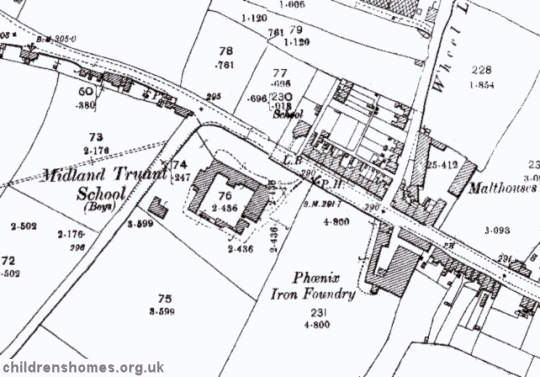
Midland Truant School site, Lichfield, c.1902.
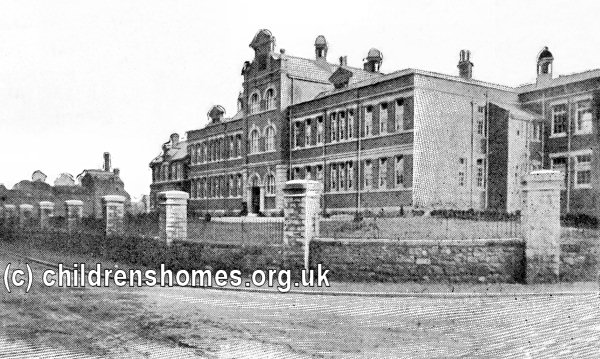
Midland Truant School from the north, Lichfield, c.1900. © Peter Higginbotham

Former Midland Truant School from the east, Lichfield, 2013. © Peter Higginbotham
The buildings included dining hall, schoolrooms, dormitories, infirmary, infectious hospital, washrooms and plunge bath, tailors' shop, laundries, drill-yard, football field, cookery kitchens, disinfecting ovens, board-room, and residencies for the superintendent, teachers and servants.
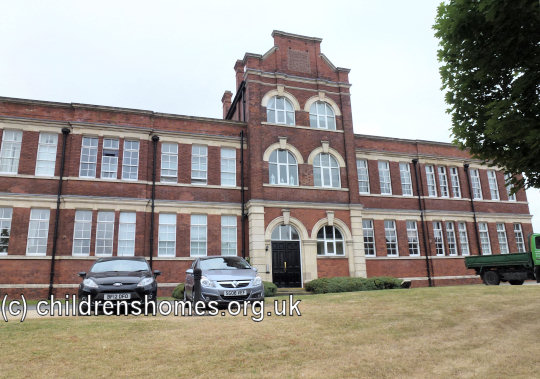
Former Midland Truant School from the north-east, Lichfield, 2013. © Peter Higginbotham
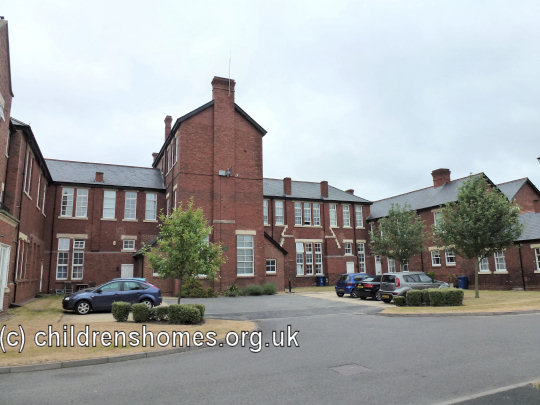
Former Midland Truant School from the south-east, Lichfield, 2013. © Peter Higginbotham
Boys arriving at the School were stripped naked, washed all over, their hair sheared close, and their clothes disinfected. The daily routine at the School was as follows:
| 6 a.m. | Rise and wash. Clean premises. |
| 8 a.m. | Breakfast. |
| 8.30 a.m. | Prayers. |
| 9 a.m. | School or work. |
| 12 noon | Drill. |
| 1 p.m. | Dinner |
| 2 p.m. | School or work (whichever not done in morning) |
| 5 p.m. | Drill. |
| 6 p.m. | Supper. |
| 6.30 p.m. | Work or recreation. |
| 7.30 p.m. | Prayers. |
| 8 p.m. | Bed. |
The meals provided varied on different days of the week and were taken from a dietary comprising porridge, beef, mutton, pork, suet pudding, boiled rice, cheese, vegetables, bread, treacle, soup, cocoa (on week-days), and tea (on Sundays).
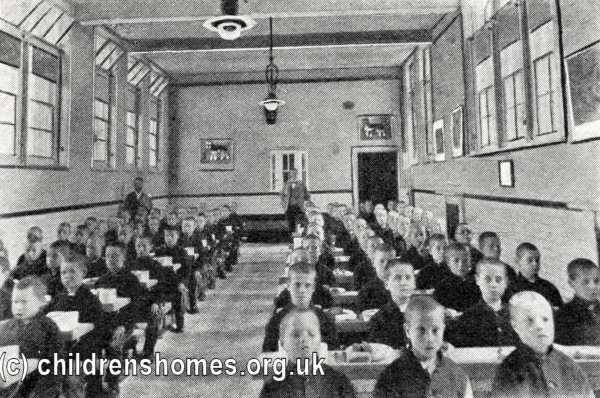
Midland Truant School dining-hall, Lichfield, c.1900. © Peter Higginbotham
By 1909, the dining-room seating arrangements had changed to groups around tables.

Midland Truant School dining-hall, Lichfield, c.1909. © Peter Higginbotham
Classroom lessons in 1896 included reading, spelling, word-building, mental arithmetic, problem solving, the history and geography of England, word-building, singing (sol-fa), and drawing (freehand, technical and maps).
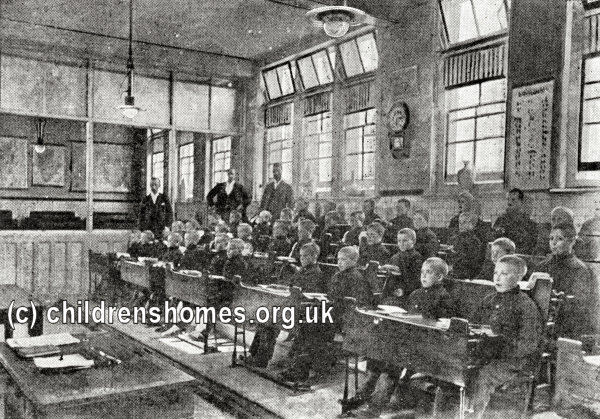
Midland Truant School classroom, Lichfield, c.1900. © Peter Higginbotham
Industrial training included gardening on the School's 1½ acres of land, and tailoring. The older boys helped in all the work of the house, in the kitchen and scullery, and in the laundry. A class of juniors boys worked with the needle-woman repairing clothing and darning socks, etc.

Midland Truant School laundry, Lichfield, c.1900. © Peter Higginbotham

Midland Truant School tailor's shop, Lichfield, c.1900. © Peter Higginbotham

Midland Truant School dormitory, Lichfield, c.1909.
As well as truants from Burton, Walsall and West Bromwich, boys were sent by School Boards from all over England, the London School Board supplying the largest number. Outside Boards were charge 6s. 6d. per boy for each week he was there. This, together with the contributions from the three local Boards, and the grants made by the government, that the running costs of the institution were met.
In October, 1904, Mr and Mrs Housden left to take charge of the Barnes Home Industrial School at Manchester. They were succeeded as superintendent and matron by Mr and Mrs A.H. Hollingdale. The School now had a bugle band of 7 boys, with 2 side-drummers. Several football matches were played with outside teams. A mark system was in use, with rewards given for good conduct. An inspector noted than several boys had had teeth withdrawn, but the use of a dentist's services were recommended to the School, who would know 'when to save and when to extract'.
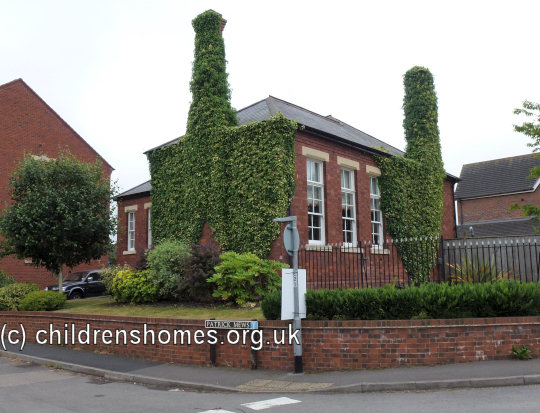
Former Midland Truant School (infectious hospital?) from the north-west, Lichfield, 2013. © Peter Higginbotham
Mr and Mrs Hollingdale were succeeded on 14th July, 1910, by Mr. W.D. Blackshaw and Mrs. Blackshaw. In the same year it was reported that 'French gardening' had been introduced at the School. Fifes had now been added to the bugle and drum band. Nine boys from the School had joined the local corps of Boy Scouts.
By 1911, the boys had been organised into four progressive squads for physical training, and good work was being done in both free and applied gymnastics. Swimming was receiving greater attention, and long country walks were taken on Sunday afternoons. A rifle range was about to be constructed. A dentist had just been appointed and was visiting the School once a month.
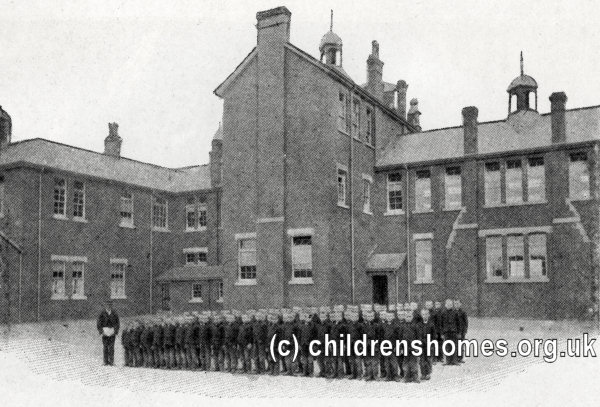
Midland Truant School on parade, Lichfield, c.1900. © Peter Higginbotham
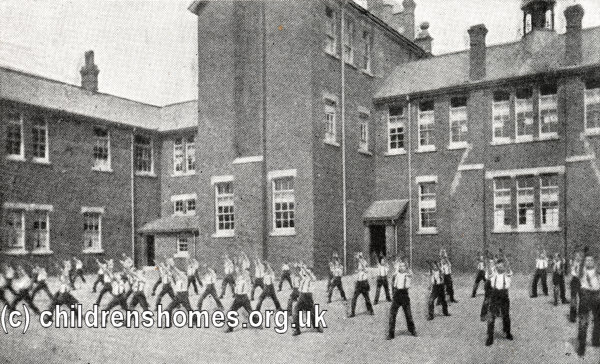
Midland Truant School at drill, Lichfield, c.1900. © Peter Higginbotham
From around 1908, the School was known as the Midland Short-term Industrial School, or just the Midland Industrial School.
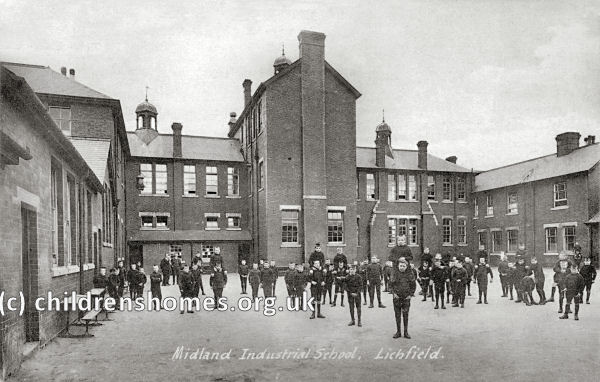
Midland Industrial School playground, Lichfield, c.1909. © Peter Higginbotham
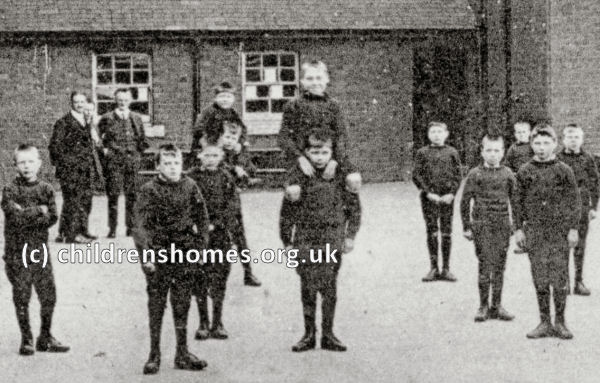
Midland Industrial School playground (detail), Lichfield, c.1909. © Peter Higginbotham
Following a decline in the numbers being placed at the School it was formally closed on April 3rd, 1924.
In 1926, the premises were re-opened as the residential Beacon School for children who were 'mentally defective though educable.' The school closed in around 1990 and the property has now been converted into flats.
Records
Note: many repositories impose a closure period of up to 100 years for records identifying individuals. Before travelling a long distance, always check that the records you want to consult will be available.
- None identfied at present — any information welcome.
Bibliography
- Higginbotham, Peter Children's Homes: A History of Institutional Care for Britain's Young (2017, Pen & Sword)
- Mahood, Linda Policing Gender, Class and Family: Britain, 1850-1940 (1995, Univeristy of Alberta Press)
- Prahms, Wendy Newcastle Ragged and Industrial School (2006, The History Press)
Links
- None noted at present.
Except where indicated, this page () © Peter Higginbotham. Contents may not be reproduced without permission.


